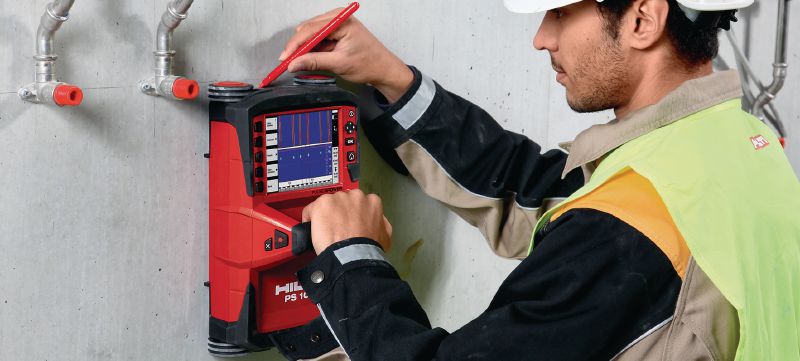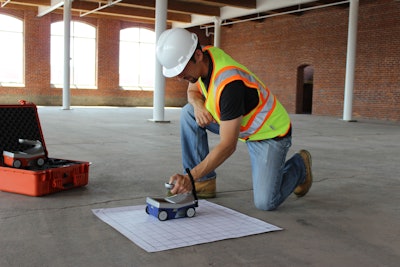Comprehensive Guide to RainierGPR Concrete Scanning Techniques
Comprehensive Guide to RainierGPR Concrete Scanning Techniques
Blog Article
Harness the Strategic Side of Concrete Scanning for Unparalleled Job Success and Quality Control
In the world of modern building and construction and framework advancement, the utilization of concrete scanning innovation has become a critical device for ensuring project success and maintaining quality requirements. This cutting-edge approach supplies a calculated side by providing vital insights into the structural integrity of concrete components, consequently making it possible for educated decision-making throughout the job lifecycle. By diving right into the depths of concrete make-ups and revealing concealed anomalies, stakeholders can proactively resolve potential risks, improve procedures, and maximize source allotment. The real power of concrete scanning lies not just in its capability to enhance job end results yet likewise in its capability to reinvent traditional methods, setting a new criteria for accuracy and performance in the building and construction sector.
The Significance of Concrete Scanning
Concrete scanning is a vital step in construction projects to guarantee the safety and honesty of frameworks. By using different scanning innovations such as Ground Passing Through Radar (GPR) and electro-magnetic induction, building teams can non-destructively evaluate the subsurface of concrete frameworks to recognize potential threats like rebar, avenues, or post-tension cords. This info is crucial for job managers, designers, and service providers to make enlightened choices and prevent pricey errors throughout the building and construction procedure.
One of the main reasons why concrete scanning is so essential is its ability to avoid mishaps and injuries on the building website. Unintentionally reducing through a live electric conduit or damaging post-tension cable televisions can have devastating consequences, not only in terms of safety and security yet likewise in regards to project hold-ups and economic implications. By conducting thorough concrete scanning prior to any exploration, cutting, or coring activities, building groups can mitigate risks and produce a much safer working atmosphere for everyone involved.
Along with safety considerations, concrete scanning likewise plays an essential duty in ensuring the long-term longevity and top quality of the framework. By spotting any issues or anomalies concealed below the surface area, such as gaps or delamination, very early intervention can be implemented to deal with these issues before they intensify into more significant problems. Inevitably, purchasing concrete scanning is an aggressive step that can conserve time, money, and sources in the long run, while additionally maintaining the greatest requirements of building and construction excellence.
Advanced Technology for Precise Results

Furthermore, 3D scanning innovations provide an extensive view of the subsurface atmosphere by developing in-depth digital models. These designs provide important understandings into the architectural integrity of concrete components and help in determining potential weaknesses prior to they rise into major issues. By incorporating these innovative modern technologies right into concrete scanning methods, building teams can improve workflows, reduce project hold-ups, and ensure the total top quality and success of the task. The precision and efficiency used by these tools contribute dramatically to the job's success by facilitating educated enhancing and decision-making quality control measures.
Enhancing Task Performance and Timelines

Moreover, concrete scanning enables groups to recognize possible hazards and architectural weak points early on, allowing for prompt remediation and preventing accidents that could thwart project timelines. The real-time information given by scanning tools promotes notified decision-making, leading to smoother coordination among various professions and stakeholders. This improved partnership minimizes conflicts, improves performance, and inevitably accelerates project distribution.
Furthermore, by proactively Our site attending to issues through concrete scanning, building and construction teams can comply with schedules a lot more efficiently, decrease downtime, and optimize source appropriation. The capability to identify surprise challenges and confirm structural stability successfully contributes to overall job performance and timelines, making certain successful outcomes and client satisfaction.
Ensuring Safety And Security and Threat Mitigation

Danger mitigation techniques can be improved with the comprehensive details offered by concrete scanning, enabling job teams to make enlightened choices that minimize the likelihood of unanticipated incidents. In addition, by precisely mapping out subsurface conditions, specialists can avoid costly rework, delays, and damages to existing structures, better adding to general job safety and security and success. Implementing concrete scanning as a regular technique not only guarantees a safer workplace yet also instills self-confidence in stakeholders pertaining to the task's dedication to quality and threat monitoring.
Quality Control With Concrete Scanning
Concrete scanning plays a crucial duty in promoting high quality assurance requirements within building jobs. By making use of advanced scanning modern technologies such as Ground Passing Through Radar (GPR) and Concrete X-ray, task managers and engineers can make certain the honesty and high quality of concrete structures. With concrete scanning, potential flaws, such as voids, splits, or enhancing bar blockage, can be spotted non-destructively, enabling prompt interventions to preserve the architectural stability of the job.
Quality assurance via concrete scanning not only helps in determining existing concerns yet additionally allows positive measures to stop future problems that could endanger the security and longevity of the framework. By carrying out extensive scans at key stages of building, teams can confirm the precision of structural strategies, validate the placement of vital elements, and resolve any kind of inconsistencies immediately. This proactive technique lessens rework, Recommended Site lowers expensive delays, and inevitably leads to the distribution of high-quality, sturdy frameworks that meet or surpass industry requirements.
Verdict
Finally, concrete scanning plays a vital role in guaranteeing task success, security, efficiency, and top quality assurance. By using advanced modern technology for precise results, building projects can be completed with better precision and within timelines. The strategic edge given by concrete scanning permits for positive risk mitigation and improves general job administration. Integrating concrete scanning into construction procedures is essential for accomplishing unparalleled success and ensuring top quality end results - RainierGPR Concrete Scanning.
In the world of contemporary construction and original site facilities development, the use of concrete scanning modern technology has actually arised as a crucial tool for making certain project success and maintaining top quality standards. By including these sophisticated technologies right into concrete scanning techniques, building and construction teams can improve operations, lower job delays, and make sure the general quality and success of the job.Given the critical nature of job effectiveness and timelines in construction monitoring, the focus now changes towards making sure safety and mitigating threats within the task atmosphere.Concrete scanning plays a crucial duty in supporting quality assurance criteria within building tasks. By using innovative scanning modern technologies such as Ground Passing Through Radar (GPR) and Concrete X-ray, job supervisors and engineers can make certain the honesty and quality of concrete frameworks.
Report this page